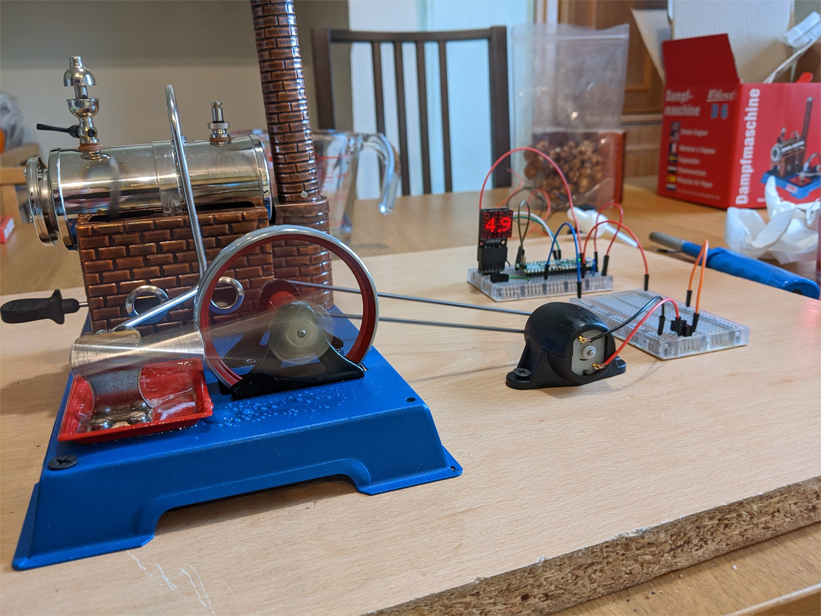Raspberry Pi Pico Runs on Steam-Powered Engine
We know how complicated it can be sorting out the power demands of your Raspberry Pi project but this creation from maker Mike Bell takes the idea to a whole new level. Using a small, steam-powered engine, he’s managed to power a Raspberry Pi Pico along with a few accessories. We’ve seen clever power solutions in the past but never anything quite like this.
It's alive! I have a steam powered @Raspberry_Pi Pico! pic.twitter.com/SHlxSl0fYzSeptember 3, 2022
According to Bell, it takes approximately two to three minutes to get the water boiling in the steam engine. Once everything is hot and ready, the Pico can run for around 12 minutes before the water in the boiler dissipates. The engine has a 135ml boiler capacity with 1.5 bar of operating pressure. It’s heated using Mamod wax fuel tablets which provide 15 minutes of burn time.


Bell had to make a few changes in the system design to optimize the power consumption. With both the Pico and display module integrated into the setup, it was drawing power between 9mA and 13mA at 5V. He then decided to hook it up to a dynamo which produced around 3.3V, a voltage that is acceptable for the Pico.
The RP2040 processor had to be underclocked to 250 kHz which caused some issues as the microsecond timer is only able to read clock speed at 2 MHz and above. To alleviate this issue, Bell programmed the Pico to calculate time more slowly by increasing the timer divider.
The engine Bell is using is a Wilesco D6 with an M66 dynamo which also features an LED light. The display used is a Dot-matrix display breakout from Pimoroni. The Dot-matrix to be adjusted, as well, to reduce the maximum current to its LEDs to 10 mA down from 35 mA. This change made them illuminate at a lower brightness but Bell assures the content on the display is still legible and necessary to reduce overall power consumption.
This is hands down one of the coolest methods we’ve ever seen for powering a Raspberry Pi. If you want to recreate this Raspberry Pi project, check out the original project thread shared to Twitter and be sure to follow Mike Bell for more cool creations in the future.
Get Tom's Hardware's best news and in-depth reviews, straight to your inbox.

Ash Hill is a contributing writer for Tom's Hardware with a wealth of experience in the hobby electronics, 3D printing and PCs. She manages the Pi projects of the month and much of our daily Raspberry Pi reporting while also finding the best coupons and deals on all tech.